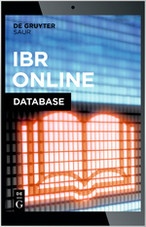- 14 December 2022
Article/Publication Details
HUSSERL’S LANGUAGE OF NEUTRALITY
| Title in the language of publication: | HUSSERL’S LANGUAGE OF NEUTRALITY |
| Author: | GUELFO CARBONE |
| Issue: |
HORIZON. Studies in Phenomenology. Vol. 11, №2 (2021), 517-543 |
| Language: | English |
| Document type: | Research Article |
| DOI : 10.21638/2226-5260-2022-11-2-517-543 | PDF (Downloads: 1137) |
Abstract
Husserl intended the phenomenological method as a new beginning for philosophy. The epoché, the key notion of this method, entails a modification of attitude such that it can completely cancel and disempower all that might be given to us and that might be used for philosophical inquiry. In Ideas I, in particular, this is addressed as the “neutrality modification,” and defined as a universal modification of consciousness that permeates the phenomenological attitude. Neutralization, along with the method, is described by relying on what Husserl calls the “language of neutrality,” which is actually spoken while investigating in the phenomenological attitude, enacted in the descriptions, and also discloses a series of rather peculiar acts that must be performed in order to obtain the phenomenological attitude. This paper discusses the phenomenological language of neutrality, first presenting what “neutrality” means, as well as illustrating the essential expressions of this peculiar language (such as “to put out of action,” “to bracket,” “to suspend,” and so on), then situating it in the context of phenomenological analyses, particularly as regards those devoted to phantasy experiences. Finally, going back to early interpretations of Husserl’s transcendental philosophy, notably the critical readings provided by Levinas and Fink, some key features of the method of epoché are pointed out, suggesting that the study of the specific neutrality involved in the latter can contribute to answering the question of what kind of act epoché is, and if it can even be considered an act at all.
Keywords
Edmund Husserl, phenomenology, methodology, epoché, neutrality, phantasy, language.
References
- Agamben, G. (2000). Means without Ends. Notes on Politics (V. Binetti & C. Casarino, Trans.). Minneapolis, MN, London: University of Minnesota Press.
- Agamben, G. (2016). The Use of Bodies (A. Kotsko, Trans.). Stanford, CA: Stanford University Press.
- Agamben, G. (2018). Per un’ontologia e una politica del gesto. In Gesto. Seminario del Giardino di studi filosofici. Retrieved from https://www.quodlibet.it/toc/404.
- Alloa, E. (2010). Phantasie. In H.-H. Gander (Ed.), Husserl-Lexicon (235-236). Darmstadt: WBG.
- Annas, J., & Barnes, J. (Eds.). (2000). Sextus Empiricus. Outlines of Scepticism (2nd ed.). Cambridge: Cambridge University Press.
- Belussi, F. (1990). Die modaltheoretischen Grundlagen der Husserlschen Phänomenologie. Freiburg i.B.: Alber Verlag.
- Bernet, R. (1991). Le concept husserlien de noème. Les Études Philosophiques, 1, 79–100.
- Carr, D. (1994). The Question of the Subject: Heidegger and the Transcendental Tradition. Human Studies, 17 (4), 403–418.
- Chapel de la Pachevie, P. (2000). Edmund Husserl la filosofia come conversio. In L. Alici, R. Piccolomini, A. Pieretti (Eds.), Esistenza e libertà. Agostino nella filosofia del Novecento. Vol. 1 (21–47). Rome: Città Nuova.
- Cobos, J. C. (2010). Vergegenwärtigung. In H.-H. Gander (Ed.), Husserl-Lexicon (294–296). Darmstadt: WBG.
- Crowell, S. G. (2012). Transcendental Phenomenology and the Seductions of Naturalism: Subjectivity, Consciousness, and Meaning. In D. Zahavi (Ed.), The Oxford Handbook of Contemporary Phenomenology (25–47). Oxford: Oxford University Press.
- Dattilo, E. (2018). Teoria del gesto. In Gesto. Seminario del Giardino di studi filosofici. Retrieved from https://www.quodlibet.it/toc/407.
- De Santis, D. (2021). Husserl and the a priori. Cham: Springer.
- De Warren, N. (2015). Concepts Without Pedigree: The Noema and Neutrality Modification: Section III, Chapter 4, On the Problems of Noetic-Noematic Structures. In A. Staiti (Ed.), Commentary on Husserl’s “Ideas I” (225–255). Berlin, München, Boston: De Gruyter.
- De Warren, N. (2020). The Virtuous Philosopher and the Chameleon Poet: Husserl and Hofmannsthal. In P. P. Haensler, K. Mendicino & R. Tobias (Eds.), Phenomenology to the Letter: Husserl and Literature (263–282). Berlin, Boston: De Gruyter. https://doi.org/10.1515/9783110654585-012
- Drummond, J. J. (2007). Neutralization. In J. J. Drummond (Ed.), Historical Dictionary of Husserl’s Philosophy (143–144). Lanham, MD: Scarecrow Press.
- Ferencz-Flatz, Ch. (2009). The Neutrality of Images and Husserlian Aesthetics. Studia Phaenomenologica, 9, 477–493.
- Fink, E. (1966). Vergegenwärtigung und Bild. Beiträge zur Phänomenologie der Unwirklichkeit. In E. Fink, Studien zur Phänomenologie 1930-1939 (1–78). Dordrecht: Springer.
- Fink, E. (1970). The Phenomenological Philosophy of Edmund Husserl and Contemporary Criticism. In R. O. Elveton (Ed.), The Phenomenology of Husserl. Selected Critical Readings, second edition (73–147). London, New York: Routledge.
- Guaraldi, A. (1965). La modificazione di neutralità come epoché naturale. Revue internationale de philosophie, 19 (71–72), 74–106.
- Guidi, L. (2018). Philosophie als Umwendung. Performativität und Negation im Gebrauch der formalen Anzeige. In S. Camilleri, G. Fagniez & Ch. Gauvry (Eds.), Heideggers Hermeneutik der Faktizität – L’herméneutique de la facticité de Heidegger – Heidegger’s Hermeneutics of Facticity (47-64). Nordhausen: Verlag Traugott Bautz GmbH.
- Guidi, L., & Rentsch, Th. (Eds.). (2020). Phenomenology as Performative Exercise. Leiden, Boston: Brill.
- Hadot, P. (1968). Conversion. In Encyclopaedia Universalis, vol. 4 (979–981). Paris: Encyclopaedia Universalis France.
- Heidegger, M. (1984). The Metaphysical Foundations of Logic. Bloomington, IN: Indiana University Press.
- Heidegger, M. (2004). Phenomenology of Religious Life: 1. Introduction to the Phenomenology of Religion; 2. Augustine and Neo-Platonism; 3. The Philosophical Foundations of Medieval Mysticism. Bloomington, IN: Indiana University Press.
- Hennigfeld, I. (2010). Modifikation. In H.-H. Gander (Ed.), Husserl-Lexicon (199–200). Darmstadt: WBG.
- Husserl, E. (1930). Nachwort zu meinen „Ideen zu einer reinen Phänomenologie und phänomenologischen Philosophie“. Jahrbuch für Philosophie und phänomenologische Forschung, 11, 549¬–570.
- Husserl, E. (1950). Idées directrices pour une phénoménologie pure et une philosophie phénoménologique. Tome premier. Introduction générale à la phénoménologie pure. Paris: Gallimard.
- Husserl, E. (1959). Erste Philosophie (1923/24). Zweiter Teil. Theorie der phänomenologischen Reduktion (Hua VIII). Den Haag: Martinus Nijhoff.
- Husserl, E. (1964). Paris Lectures. The Hague: Martinus Nijhoff.
- Husserl, E. (1965). Phenomenology and the Crisis of Philosophy: Philosophy as Rigorous Science and Philosophy and the Crisis of European Man. New York, Evanston, London: Harper & Row.
- Husserl, E. (1966). Analysen zur passiven Synthesis: Aus Vorlesungs- und Forschungsmanuskripten (1918–1926) (Hua XI). Den Haag: Martinus Nijhoff.
- Husserl, E. (1970). The Crisis of European Sciences and Transcendental Phenomenology. An Introduction to Phenomenological Philosophy. Evanston, IL: Northwestern University Press.
- Husserl, E. (1973). Die Idee der Phänomenologie. Fünf Vorlesungen (Hua II). Nachdruck der 2. erg. Auflage. Den Haag: Martinus Nijhoff.
- Husserl, E. (1976a). Die Krisis der europäischen Wissenschaften und die transzendentale Phänomenologie: Eine Einleitung in die phänomenologische Philosophie (Hua VI). Den Haag: Martinus Nijhoff.
- Husserl, E. (1976b). Ideen zu einer reinen Phänomenologie und phänomenologischen Philosophie. Erstes Buch: Allgemeine Einführung in die reine Phänomenologie. 1. Halbband. Text der 1.-3 (Hua III/1). Auflage. Den Haag: Martinus Nijhoff.
- Husserl, E. (1980). Phantasie, Bildbewusstsein, Erinnerung. Zur Phänomenologie der anschaulichen Vergegenwärtigungen. Texte aus dem Nachlass (1898–1925) (Hua XXIII). The Hague, Boston, London: Martinus Nijhoff.
- Husserl, E. (1982). Cartesian Meditations. An Introduction to Phenomenology (7th imp.). The Hague, Boston, London: Martinus Nijhoff Publishers.
- Husserl, E. (1983). Ideas Pertaining to a Pure Phenomenology and to a Phenomenological Philosophy. First Book. General Introduction to a Pure Phenomenology. The Hague, Boston, Lancaster: Martinus Nijhoff Publisher.
- Husserl, E. (1984a). Logische Untersuchungen. Zweiter Band. Erster Teil. Untersuchungen zur Phänomenologie und Theorie der Erkenntnis. Text der 1. und der 2. Auflage ergänzt durch Annotationen und Beiblätter aus dem Handexemplar (Hua XIX/1). The Hague, Boston, Lancaster: Martinus Nijhoff Publishers.
- Husserl, E. (1984b). Einleitung in die Logik und Erkenntnistheorie. Vorlesungen (1906/07) (Hua XXIV). Dordrecht, Boston, London: Martinus Nijhoff Publisher.
- Husserl, E. (1991). Cartesianische Meditationen und Pariser Vorträge (Hua I). Nachdruck der 2. verb. Auflage. Dordrecht: Springer.
- Husserl, E. (1994). Brief an Hugo von Hofmannsthal vom 12.01.1907. In Briefwechsel, Teil VII, Wissenschaftlerkorrespondenz (Hua Dokumente III/VII) (133–136). Dordrecht, Boston, London: Kluwer Academic Publisher.
- Husserl, E. (1999). The Idea of Phenomenology. A Translation of „Die Idee der Phänomenologie“ (Hua II). Dordrecht, Boston, London: Kluwer Academic Publishers.
- Husserl, E. (2001a). Die Bernauer Manuskripte über das Zeitbewußtsein (1917/18) (Hua XXXIII). Dordrecht, Boston, London: Kluwer Academic Publisher.
- Husserl, E. (2001b). Analyses Concerning Passive and Active Synthesis: Lectures on Transcendental Logic. Dordrecht: Springer.
- Husserl, E. (2002). Zur phänomenologischen Reduktion. Texte aus dem Nachlass (1926-1935) (Hua XXXIV). Dordrecht, Boston, London: Kluwer Academic Publishers.
- Husserl, E. (2005). Phantasy, Image Consciousness, and Memory (1898–1925) . Dordrecht: Springer.
- Husserl, E. (2012). Ideas: General Introduction to Pure Phenomenology (1931 1st ed.). London: Routledge.
- Husserl, E. (2014). Ideas for a Pure Phenomenology and Phenomenological Philosophy. First Book: General Introduction to Pure Phenomenology. Indianapolis, IN, Cambridge: Hackett Publishing Company.
- Kant, I. (1998). Critique of Pure Reason. Cambridge, New York: Cambridge University Press.
- Kirchmayr, R. (2021). L’epoché come sovversione e la torsione del tempo. aut aut, 390, 65–83.
- Lavigne, J.-F. (2005). Husserl et la naissance de la phénoménologie (1900–1913) . Des Recherches logiques aux Ideen: la genèse de l’idéalisme transcendental phénoménologique. Paris: PUF.
- Levinas, E. (1982). L’œuvre de Edmond Husserl. In E. Levinas, En découvrant l’existence avec Husserl et Heidegger, réimpression conforme à la première édition suivie d’essais nouveaux (7-52). Paris: Librairie Philosophique J. Vrin.
- Levinas, E. (1995). The Theory of Intuition in Husserl’s Phenomenology (2nd ed.). Evanston, IL: Northwestern University Press.
- Moran, D., & Cohen, J. (Eds.). (2012). The Husserl Dictionary. London, New York: Bloomsbury.
- Nietzsche, F. (2006). On the Genealogy of Morality. Cambridge: Cambridge University Press.
- Paci, E. (1961). Tempo e verità nella fenomenologia di Husserl. Milan: Bompiani.
- Paci, E. (2021). Epoché. aut aut, 390, 19–21.
- Patočka, J. (1988). Qu’est-ce que la phénoménologie?. In Qu’est-ce que la phénoménologie? (263–302). Grenoble: Éditions Jérome Millon.
- Patočka, J. (1996). Heretical Essays in the Philosophy of History. Chicago, La Salle: Open Court Publishing Company.
- Popa, D. (2011). La langue des choses muettes. Edmund Husserl et Hugo von Hofmannsthal. Klesis, 20, 4–23.
- Rovatti. P. A. (2021). Il gesto fenomenologico. aut aut, 390, 3–14.
- Ryle, G. (1973). Negative ‘Actions.’ Hermathena, 115, 81–93.
- Şan, E. (2015). Essai sur la thématisation phénoménologique du neutre. Implications Philosophiques. Retrieved from http://www.implications-philosophiques.org/neutralite-apparition/.
- Scheler. M. (1973). Phenomenology and the Theory of Cognition. In M. Scheler, Selected Philosophical Essays (136-201). Evanston, IL: Northwestern University Press.
- Schuhmann, K. (1973). Die Dialektik der Phänomenologie. I. Husserl über Pfänder. Den Haag: Martinus Nijhoff.
- Serra, A. M. (2010). Neutralisierung. In H.-H. Gander (Ed.), Husserl-Lexicon (208–209). Darmstadt: WBG.
- Smith, B., & Smith, D. (Eds.). (1995). Introduction. In B. Smith & D. Smith (Eds.), The Cambridge Companion to Husserl (1–44). Cambridge, New York: Cambridge University Press.
- Sommer, Ch. (2005). L’éthique de l’ontologie: Remarque sur « Sein und Zeit » (§ 63) de Heidegger. Alter: Revue de phénoménologie, 13, 119–134.
- Sloterdijk, P. (2012). The Art of Philosophy. Wisdom as a Practice. New York: Columbia University Press.
- Staiti, A. (2010). Epoché. In H.-H. Gander (Ed.), Husserl-Lexicon (84–86). Darmstadt: WBG.
- Virno, P. (2015). L’uso della vita. In P. Virno, L’idea di mondo. Intelletto pubblico e suo della vita (153-187). Macerata: Quodlibet.
- Warren, H. C. (2002). Buddhism in Translation. Delhi: Motilal Banarsidass Publishers.
- Wilberg, H. S. (2020). Absehen – Disregarding Literature (Husserl / Hofmannsthal / Benjamin). In P. P. Haensler, K. Mendicino & R. Tobias (Eds.), Phenomenology to the Letter: Husserl and Literature (133-148). Berlin, Boston: De Gruyter. https://doi.org/10.1515/9783110654585-007
- Xolocotzi, A. (2010). Akt. In H.-H Gander (Ed.), Husserl-Lexicon (21–23). Darmstadt: WBG.

This work is licensed under a Creative Commons Attribution-NonCommercial 4.0 International License.

|
|
|
|
|

|
|
|
|
|

|
|
|
|
|
|
|
|
|
|
|
|
|
|
|
|
|
|
|
|
|
|

|
|
|
|
|
|
|
|
|
|
|
|
|
|
|
|
|
|
|
|
|
|
|
|
|
|
|
|

|

|
Social networks:





